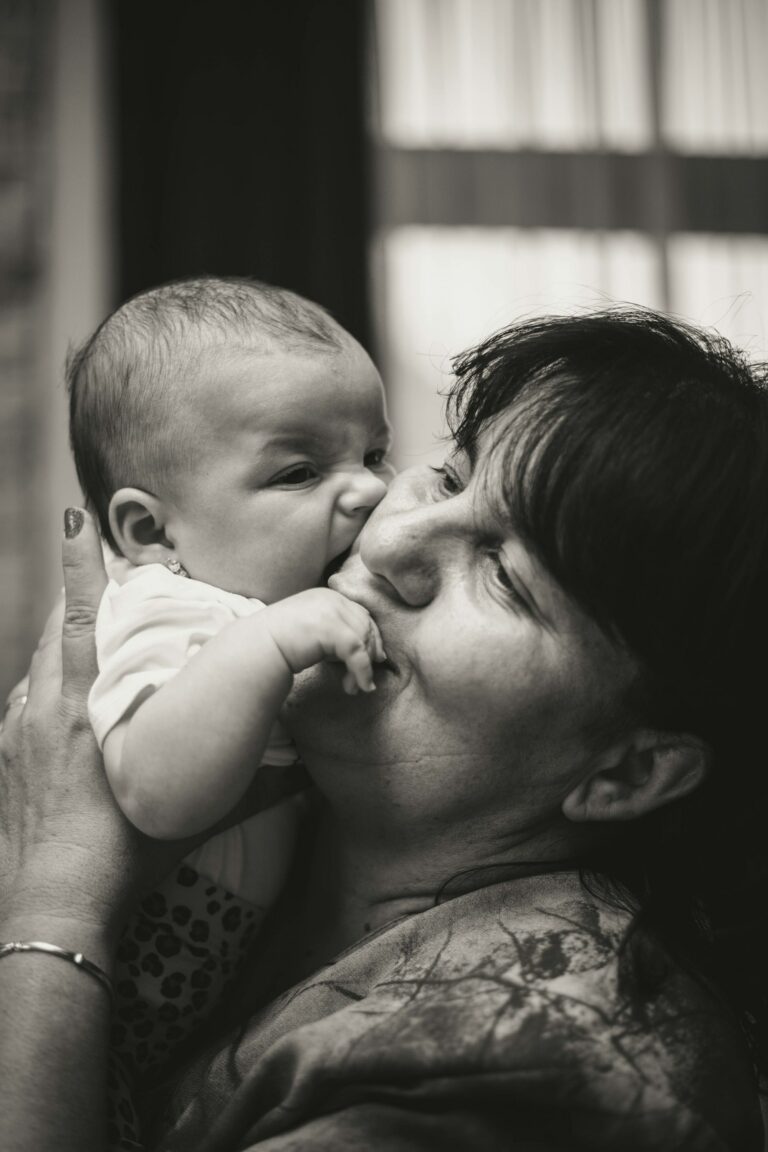Newborns are mysteries wrapped in soft blankets. Delicate, yet astoundingly robust—they spend their earliest days governed by hidden neurological scripts. One such script, the Spinal Perez Reflex, raises a flood of questions for curious parents. Why does a soft stroke along your baby’s spine set off a surprising cascade of movements? Could this odd little reaction tell you something about your baby’s development or even future learning and coordination? If all this feels slightly overwhelming, breathe easy—there’s a well-mapped path to understanding. Move with curiosity, not anxiety. Here unfolds a journey into medical mechanisms, parental reassurance, and actionable strategies you can use today. Expect answers to your burning questions, science you can trust, and practical steps you can try, all wrapped in empathy.
What Is the Spinal Perez Reflex? Demystifying the Basics
Let’s start bluntly: the Spinal Perez Reflex is a primitive neurological reflex. But what does that mean for your baby? Imagine this: the body hardwires a series of instinctive responses to help newborns survive and thrive. The Spinal Perez Reflex is one, awakened when the skin alongside your infant’s spine is lightly stimulated, typically from the coccyx towards the neck. The astonishing result? You may observe a coordinated extension of the head, contraction of the back muscles, and, in many cases, the legs flexing—an elegant (and involuntary) movement sequence showcasing the brain and spinal cord’s early connections.
For decades, doctors and neurodevelopmental therapists have studied this reaction to decode the intricacies of neural pathways, muscular tone, and sensory integration. It’s usually discussed alongside the Moro Reflex and Galant Reflex, and its medical relevance cannot be overstated—proper reflex integration marks healthy brain and motor system maturation. Consider the Spinal Perez Reflex a sneak peek into the building blocks preparing your baby for rolling over, sitting up, crawling. Under the surface, it also helps set the stage for postural control and future learning.
How Does the Spinal Perez Reflex Work? (The Inside Story)
Here’s where the story stretches from the microscopic to the observable. At the most basic level, the spinal cord—packed with sensory receptors and motor neurons—sits ready to respond to outside stimuli. When you gently stroke up both sides of your baby’s back, neural signals sprint to the spinal cord and bounce back to the muscles, bypassing higher brain centers at this age. The result? An automatic arching of the spine, upwards tilt of the pelvis, and sometimes a sharp flexion of tiny legs—all part of an instinctive reflex arc. These motor responses aren’t just curious quirks; they exercise the back, abdominal, and core muscles, fostering strength needed for optimal movement and digestion.
Medical research points to another intriguing effect: through regular activation, this reflex may support the flow of cerebrospinal fluid (the clear liquid cushioning the brain and spinal cord), subtly nourishing and protecting developing neurological tissue. Don’t underestimate these early reflexes—they are the architects of coordination, muscle tone, and posture.
Emergence and Natural Integration: When and Why the Reflex Appears
Why does the Spinal Perez Reflex show up right away? Evolution seems to have planned for it. During birth, these reflexes help babies maneuver through the birth canal, enabling essential twists and propulsion. From the first days outside the womb, the Spinal Perez Reflex is highly active, beginning to fade between three and six months of age as the central nervous system gains control and voluntary movement asserts dominance.
During those crucial first months, this reflex acts as a developmental booster, activating and shaping the musculature of the spine and trunk, laying a foundation for key milestones—tummy time, rolling, crawling, eventually sitting. As the reflex gradually integrates (that is, fades away), your child shifts from involuntary, almost automatic gestures to purposeful reach, stretch, and movement.
Why Should Parents Pay Attention? The Roles Beyond Motion
Motor Milestones and Stability
The Spinal Perez Reflex isn’t merely a fleeting quirk—it’s a core builder. Each reaction strengthens spinal muscles, prepping babies for upright postures. Neural connections forged by reflex activation link the brain to every tiny movement—shaping the nervous system for balanced, coordinated steps in the future.
Digestive and Core Health
An unexpected bonus: when the Spinal Perez Reflex triggers, it gently involves the abdominal region. Some therapists believe this aids early digestion and can even ease common newborn complaints like colic and gas. Is this proven in every child? Not exactly—still, if your baby seems soothed by back massages, science may be quietly cheering along.
Emotional Regulation and Sensory Processing
Here’s where things get even more fascinating. Medical observations suggest that smooth reflex integration (when the Spinal Perez Reflex fades as expected) appears linked to improved sensory processing and emotional resilience. Babies more easily adapt to new sensations. They find comfort in touch. Their “stress processing” system develops appropriately thanks to the foundational regulation built in these early months. Struggling with fussiness? Wondering why certain touches make your child squirm? The interplay of primitive reflexes like the Spinal Perez Reflex may offer clues.
Assessing the Spinal Perez Reflex: Home and Professional Insights
A clear, calm environment is your starting point. Place your baby on their stomach—always supervised. With two fingers, firmly yet gently stroke from the base of the buttocks upward, running parallel along each side of the spinal column. Expect the back to arch, hips to lift, head to rise—sometimes accompanied by a brief vocal protest. Gentle matters, as overstimulation can be distressing.
Professionals often use this test to check neurological maturity and overall neural pathway health. Noticing a strong reflex after six months? Or a particularly dramatic arching during the first months? Bring these observations to your pediatrician or a physical therapist familiar with infant neurodevelopment. It’s not about panic—think of it as gathering data about how your child’s unique nervous system is wiring up for the future.
Retained Spinal Perez Reflex: What Could It Mean?
Persistence of the Spinal Perez Reflex past the expected timeframe (well after six months) may point to developmental lags or mild neurological processing hiccups. Signs that might catch your attention can range from frequent, pronounced back arching and trouble sitting upright, to intense discomfort from light touch along the back or restlessness during quiet time.
Other indicators? Clumsiness, difficulties staying seated during play, consistently unsettled mood, or even sensitivity to tight clothing around the midsection. Sometimes, persistent primitive reflexes can ripple out—affecting attention, memory, sensory processing, and, in some cases, bladder or bowel control. These are signals—not diagnoses. Think of them as prompts for a check-in with a pediatric physical therapist or neurodevelopmental specialist, who can recommend targeted exercises to facilitate reflex integration.
Everyday Activities to Encourage Healthy Integration
Science finds its way into everyday parenting. Your touch, your routines, your encouragement—all of it matters.
- Gentle Spinal Massage: Place your baby on their tummy, stroke gently up and down each side of their spine (use a baby-safe oil if desired). The combination of soothing pressure and therapeutic touch stimulates not only the muscles but the underlying nervous system, offering moments of connection and, sometimes, relief from fussiness.
- Tummy Time: Supervised sessions on a soft surface invite your baby to push up, reach, and lift their head, activating key postural and neck muscles. Rotating toys and varied surfaces add a sensory bonus, motivating more whole-body movement.
- Rhythmic Rocking: Hold your baby securely, sway gently. Pair this with soft words or a quiet song. These simple, repetitive movements stimulate crucial vestibular input (the sense of balance) while nurturing the parent-child bond.
- Routine Variety: Alternate between back, tummy, and side positions during the day to promote motor learning and healthy sensory adaptation.
Struggling to work these tips into your daily rhythm? Perfection isn’t the goal. Consistency, gentleness, and a spirit of curiosity get you far. Celebrate the ordinary moments—they are packed with developmental magic.
When to Reach Out: Signs for Professional Input
Some days, uncertainty may creep in. Is the back arching too frequent? Does movement seem stiff or awkward? Are sensory or attention differences emerging as your baby grows? Pediatricians, physical therapists, and specialists in sensorimotor integration are invaluable partners. They use in-depth assessments and tailored therapies—exercise routines, sensory enrichment—geared to each child’s pace. Early support can help smooth the path ahead, minimizing challenges before they gather momentum. Parents’ insights, when paired with expert guidance, are a powerful force for healthy development.
Connections With Other Primitive Reflexes
The Spinal Perez Reflex rarely acts alone. It forms a “chorus” with other reflexes, each adding a distinct note to the symphony of development:
- Moro Reflex (startle response): Trains newborns to adapt to sudden changes, fine-tuning emotional and physical reactions.
- Galant Reflex: Triggered by a touch along one side of the spine; supports trunk movement and prepares the body to crawl.
- Bauer Crawling Reflex: Orchestrates the coordinated limb movements underlying early crawling attempts.
- Landau Reflex: Drives head and leg extensions when babies are lifted face-down, strengthening the whole spine.
- Symmetrical Tonic Neck Reflex (STNR): Connects head posture to movement patterns needed for crawling.
- Labyrinthine Tonic Reflex: Influences balance, developing the foundation for later standing and walking.
Every reflex, including the Spinal Perez Reflex, weaves into a tapestry—your child’s sensory, motor, and emotional skills emerging in rich sequence. Piece by piece, involuntary movements beget conscious control, making space for sitting, standing, walking, running, climbing. If you notice unusual persistence, consulting a seasoned therapist can shed light and ease your path forward.
Parental Empowerment: Creating a Nurturing Space
Support doesn’t mean striving for unattainable perfection. It’s about embracing a gentle, flexible approach—granting your child safe spaces to discover their body and master new movements. Let babies roll, rock, and stretch on padded blankets. Watch (and sometimes, marvel) as each tries movements in their unique timing. Every step—no matter how small—is a signpost along a fascinating journey from reflex-driven beginnings to independent action.
Comparisons with other children? Not so helpful. Every infant scripts their own developmental story, at their own pace. Your job is not to force milestones, but to offer encouragement, attentive observation, and a sense of security—elements shown again and again to foster healthier emotional and neurological development. Should concerns arise, open dialogue with professionals can prevent small hurdles from becoming blockades.
Empathic communication, scientific understanding, and community resources are your ally. Trusted healthcare providers, licensed pediatric therapists, and reputable information sources are there to support and guide, never to judge or impose rigid frameworks.
Key Takeaways
- The Spinal Perez Reflex is an early, automatic response shaping your baby’s muscle tone, posture, and core movement skills—a stepping stone to voluntary action.
- This reflex typically emerges at birth, becoming less dominant as higher brain centers mature between three and six months.
- Healthy integration of primitive reflexes supports smooth sensory and emotional development, while persistent reflexes may appear as coordination, sensory, or learning differences.
- Activities such as gentle massage, tummy time, and varied positional play nurture integration and foster deeper parent-child connection.
- If you observe signs of delay or persistent reflex activity, specialized therapists offer valuable interventions tailored to your child’s needs.
- Reliable resources and compassionate health professionals stand ready to accompany you—knowledge combined with empathy brings confidence and clarity to every parenting moment.
Curious to go further? Access tailored advice and free health questionnaires to support your child by downloading the Heloa app. The rich tapestry of early development is best navigated together—with information, support, and a little wonder at the everyday miracles unfolding before your eyes.
Questions Parents Ask
What are the differences between the Spinal Perez Reflex and other spinal reflexes like the Galant Reflex?
Parents often wonder how the Spinal Perez Reflex stands apart from similar reflexes, such as the Galant Reflex. While both are spinal reflexes observed in infants, they are triggered and expressed differently. The Spinal Perez Reflex typically appears when both sides of the lower back are stroked, leading to arching of the back and neck extension. In contrast, the Galant Reflex is triggered by stroking just one side of the spine and causes the infant to curve the body towards the stimulated side. Each reflex provides information about the healthy development of the nervous system, but they play distinct roles in motor preparation during infancy.
Can the Spinal Perez Reflex impact sleep patterns or comfort in babies?
It’s natural to wonder if reflexes like the Spinal Perez might influence your baby’s sleep or comfort. While not commonly a direct cause of sleep issues, a heightened or persistent reflex can sometimes lead to increased restlessness or sensitivity, especially if your little one is easily startled or uncomfortable during sleep or tummy time. Most of the time, as the nervous system matures, the reflex integrates and these disturbances subside naturally. If you observe sleep disruptions linked to sudden movements or arching, discussing your observations with a health professional can offer reassurance and gentle guidance.
Is it necessary to actively stimulate the Spinal Perez Reflex at home for healthy development?
No specific daily stimulation of the Spinal Perez Reflex is required for typical development. Your baby’s natural interactions—such as tummy time, cuddles, and gentle movement—are generally enough to support neurological growth and integration of primitive reflexes. There’s no need to deliberately trigger this reflex except on professional recommendation for assessment or therapy. Most importantly, enjoy shared moments and let your child’s unique rhythm guide your care; your attentive presence supports healthy development day by day.










